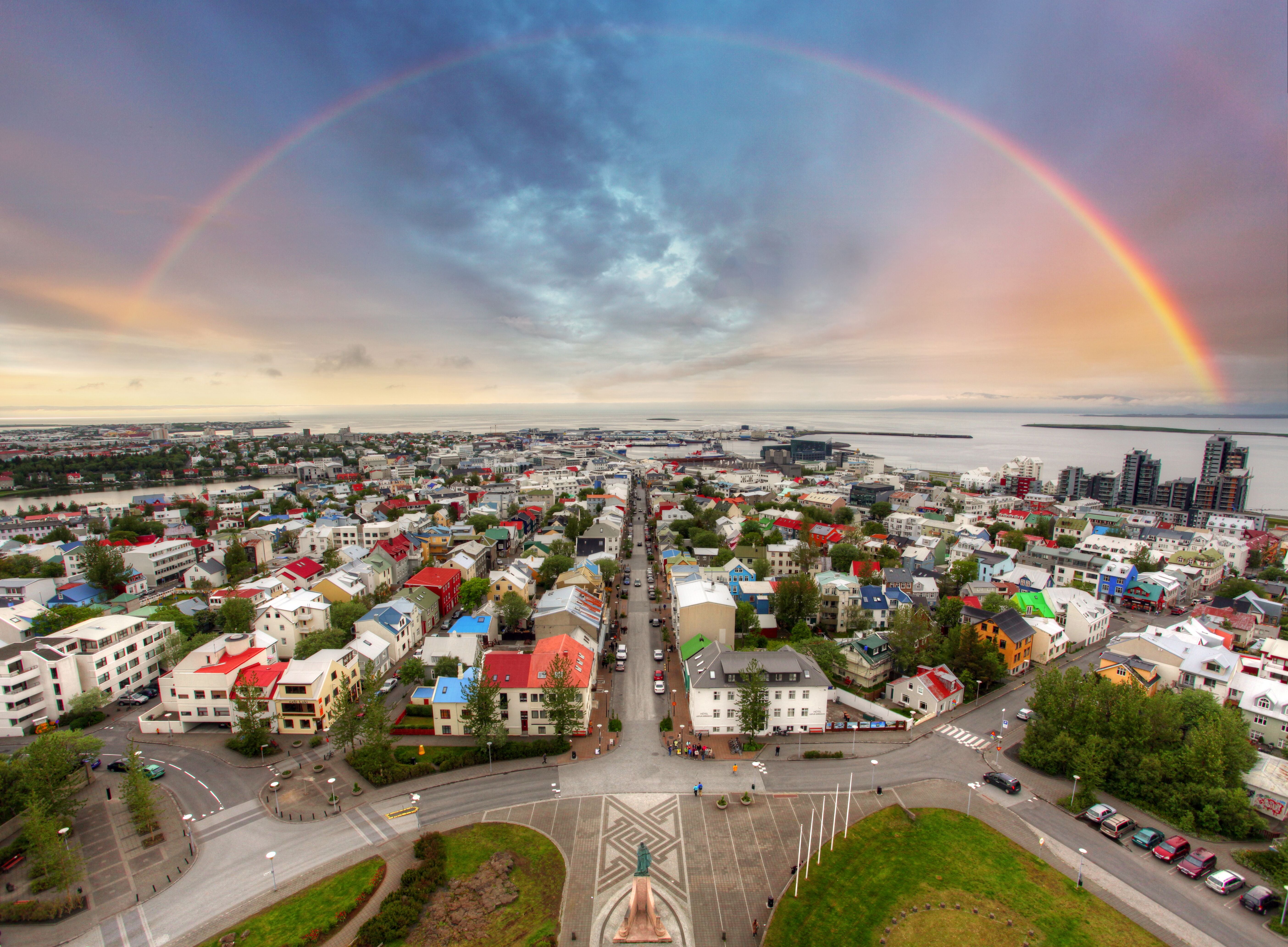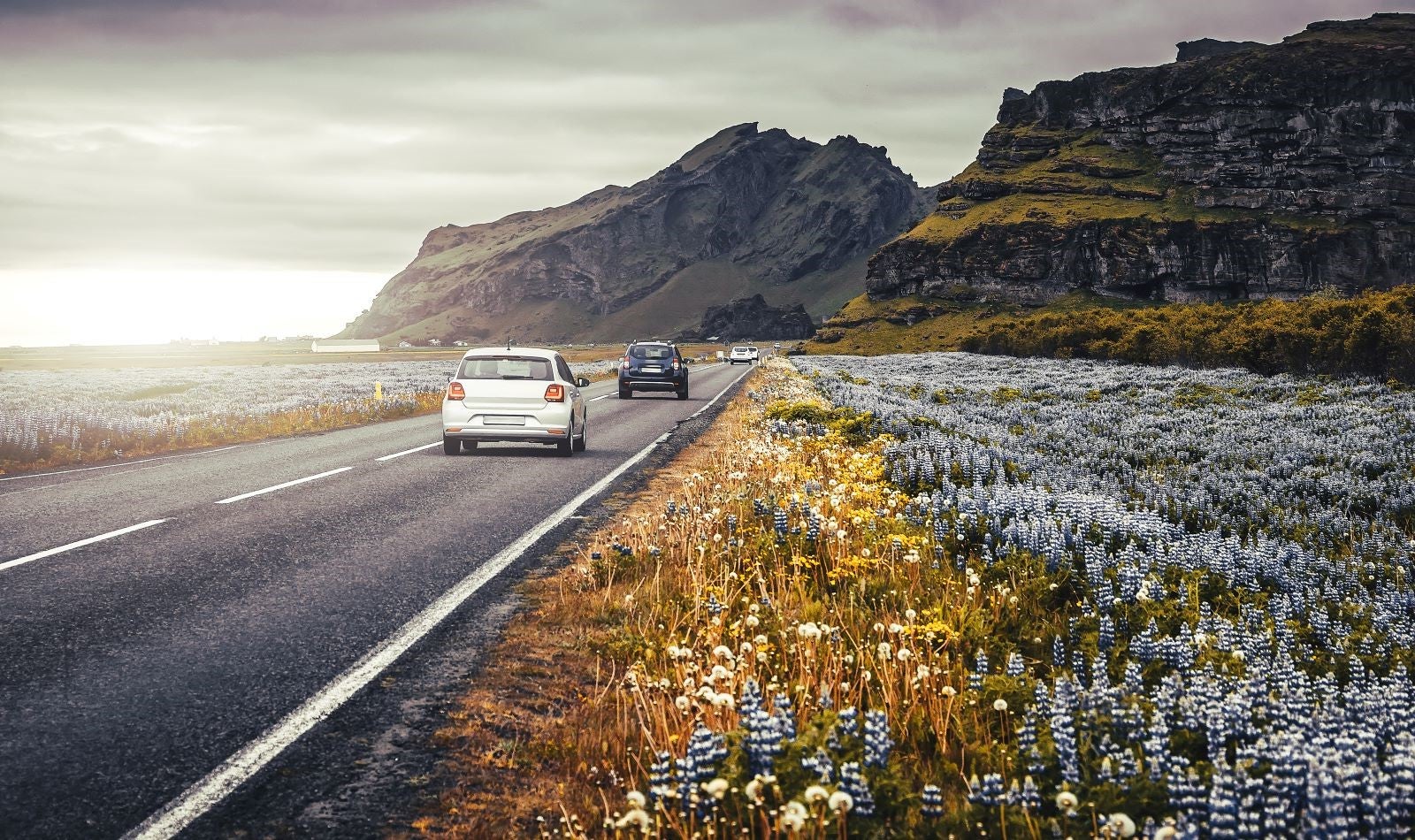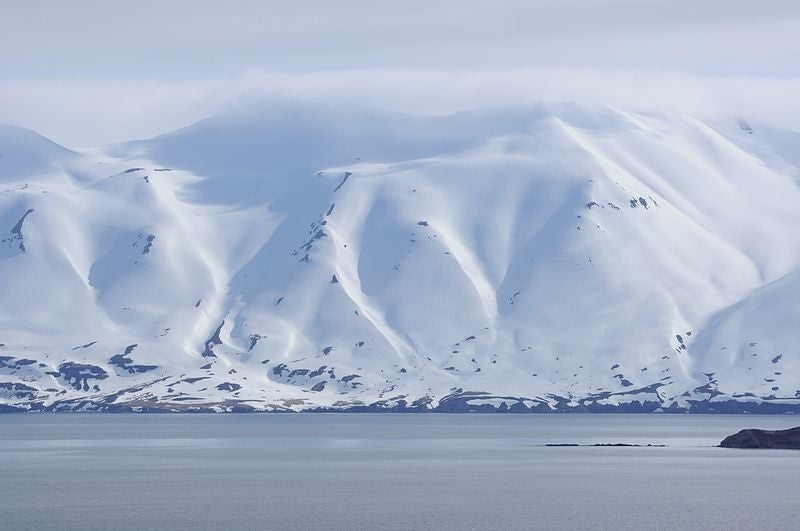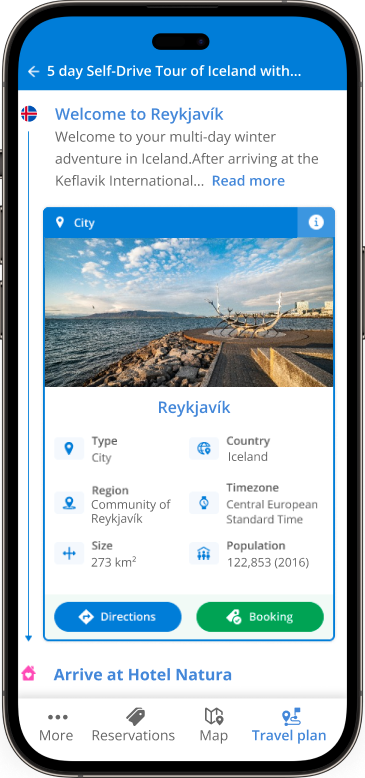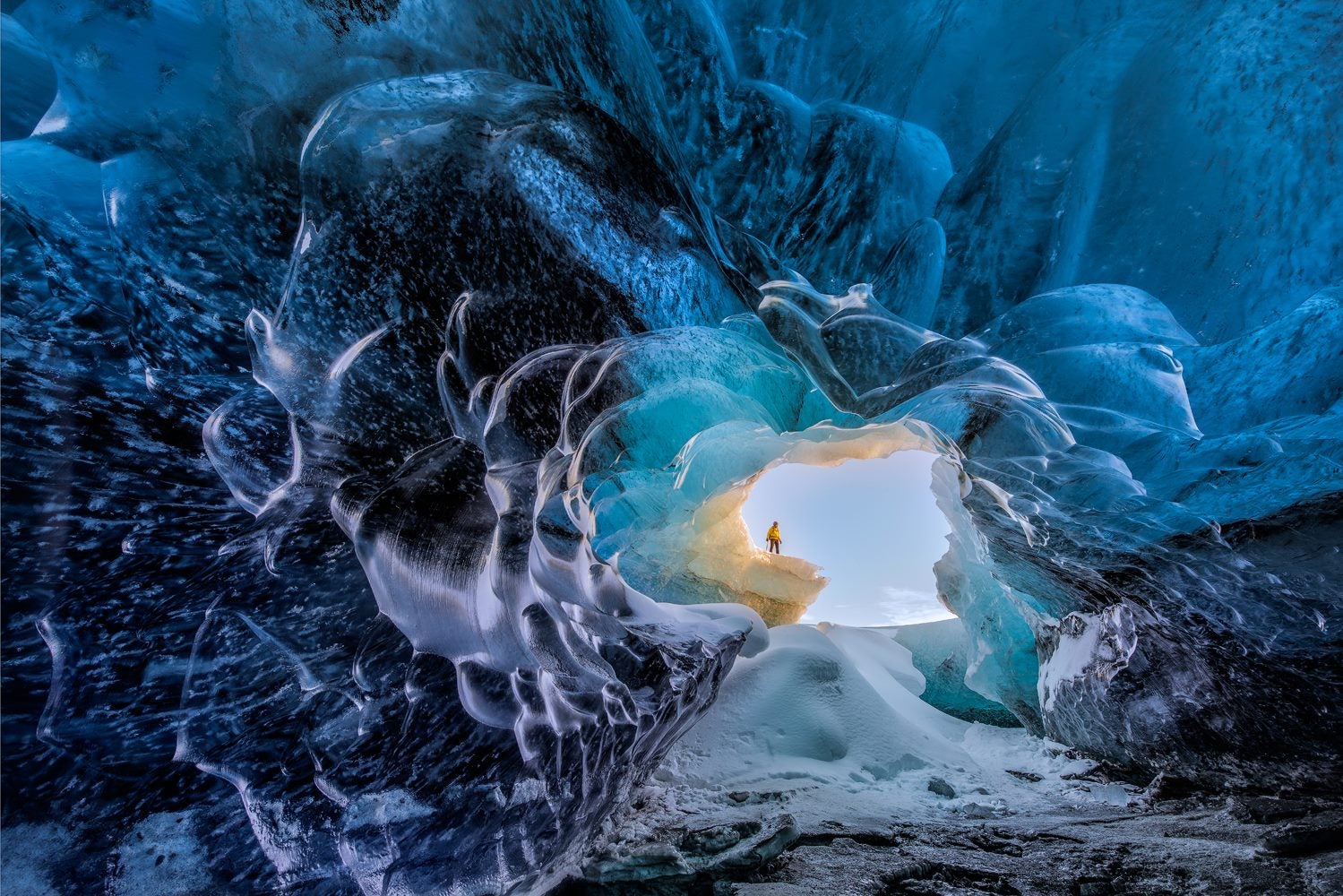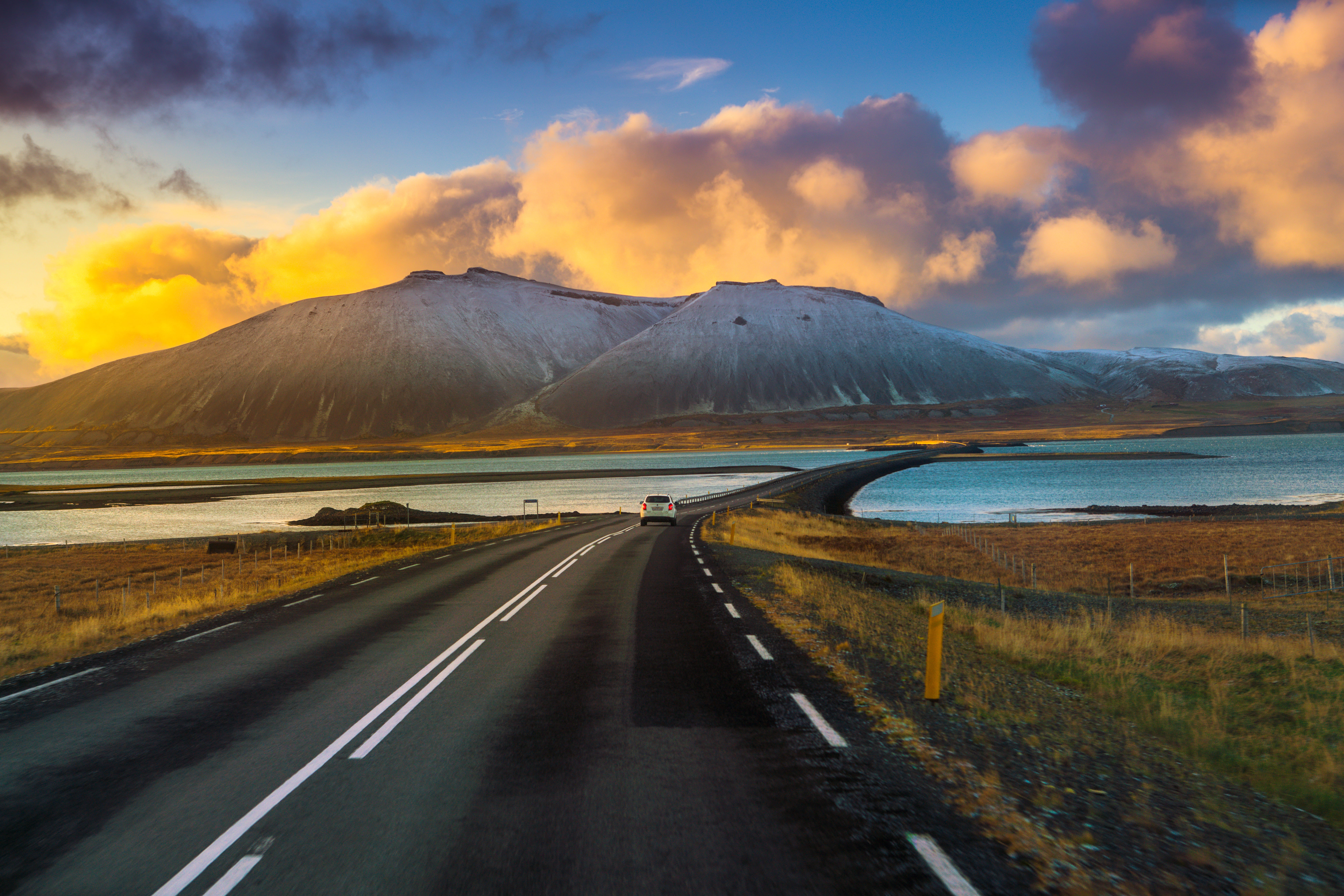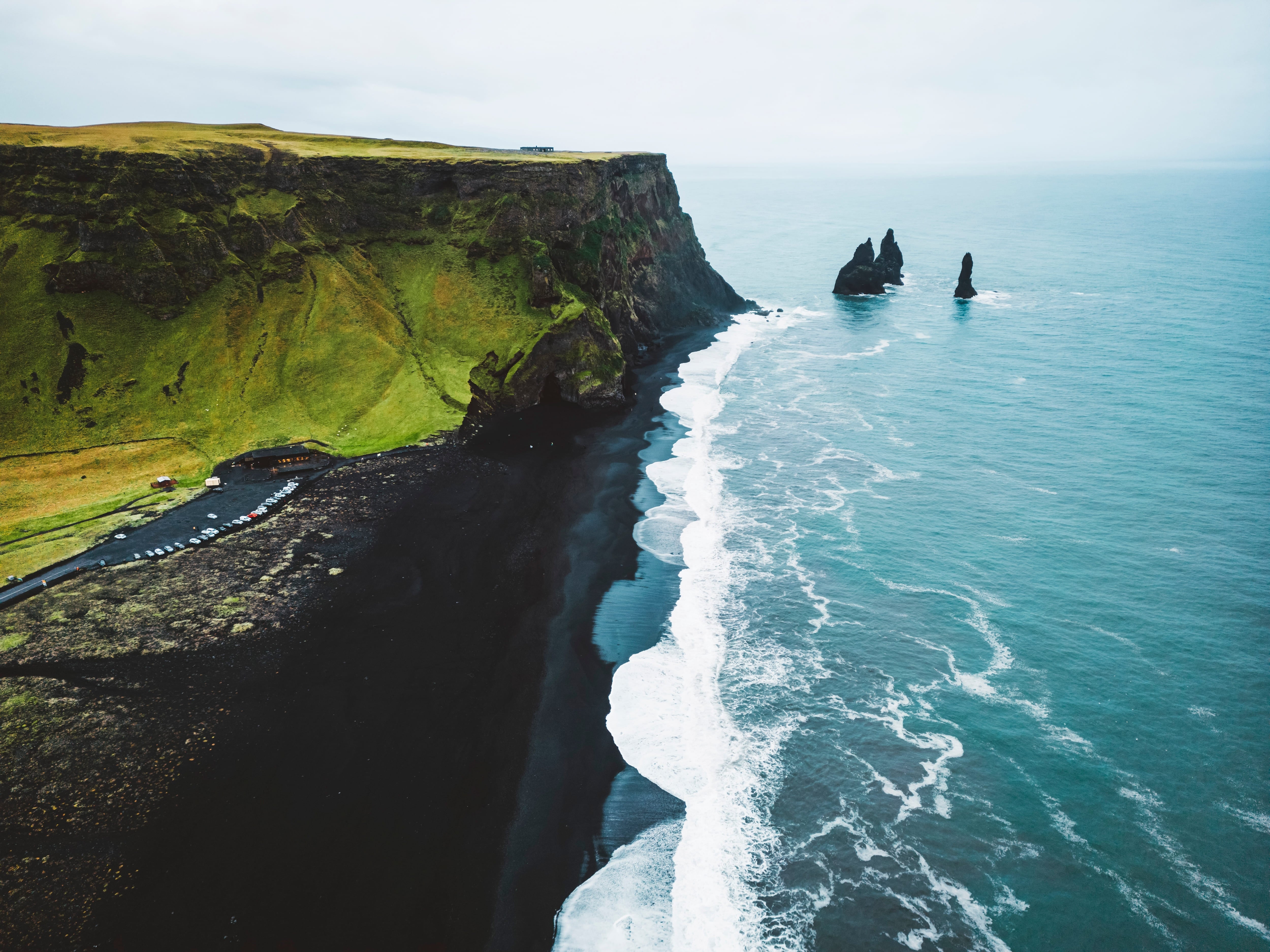
Plan your next adventure by driving in Iceland and discover the freedom of exploring glaciers, volcanoes, fjords, and hidden hot springs at your own pace. This guide will help you prepare for a safe and unforgettable journey, covering essential driving rules, road conditions, and tips to make the most of your Icelandic road trip.
Self-drive tours are one of the best ways to explore the country’s diverse landscapes, giving you the flexibility to stop where you want and travel at your own pace. Choosing the right car rentals in Iceland is essential, whether you prefer a compact car for city drives or a 4x4 vehicle for tackling Highland roads and F-roads.
Why You Can Trust Our Content
Guide to Iceland is the most trusted travel platform in Iceland, helping millions of visitors each year. All our content is written and reviewed by local experts who are deeply familiar with Iceland. You can count on us for accurate, up-to-date, and trustworthy travel advice.
Seasonal planning makes a big difference in your experience. Summer self-drive tours offer long daylight hours and easier access to remote regions, while winter self-drive tours require extra preparation for icy roads and unpredictable weather.
For a complete journey, a 2-week self-drive tour of the Ring Road and Westfjords is one of the most rewarding ways to see Iceland’s glaciers, black sand beaches, waterfalls, and charming coastal towns. Keep reading to learn essential tips for road conditions, safety, and making the most of your driving adventure.
Key Takeaways
-
Driving in Iceland is generally safe and easy.
-
Small cars work well for driving in Reykjavik, the Golden Circle, and the South Coast.
-
A 4x4 is recommended for traveling further in winter, although not necessary.
-
All rental cars in winter will have studded tires.
-
A 4x4 is required to reach the highlands in the summer. They are inaccessible in winter.
-
Drive on the right-hand side and use headlights and seat belts at all times.
-
Check road updates before heading out. High winds, rain, and snow can trigger travel alerts.
-
Dial 112 for roadside assistance, police, or medical emergencies.
Renting a Car in Iceland
Iceland offers a variety of rental cars suited for different travel needs. If you're staying in Reykjavik or driving on paved roads, renting a cheaper car like a Toyota Yaris is a budget-friendly option, though it has limited luggage space.
The Ring Road (Route 1) circles the island and connects the best attractions on the route. It’s well-maintained and suitable for all vehicles, with one lane in each direction and minimal traffic outside urban areas.
Driving a small car is easy in the summer, but if you're planning to visit more remote areas or traveling in winter, renting a four-wheel drive (4WD) vehicle like a Subaru or Toyota SUV is recommended for rough terrain and challenging conditions.
You’ll need a 4WD for Highland roads (known as F-roads in Iceland), as these routes can be rough and steep and can include river crossings. If you're visiting in winter, a 4WD is also highly recommended due to icy roads, heavy snow, and unpredictable weather.
Why Rent a 4WD?
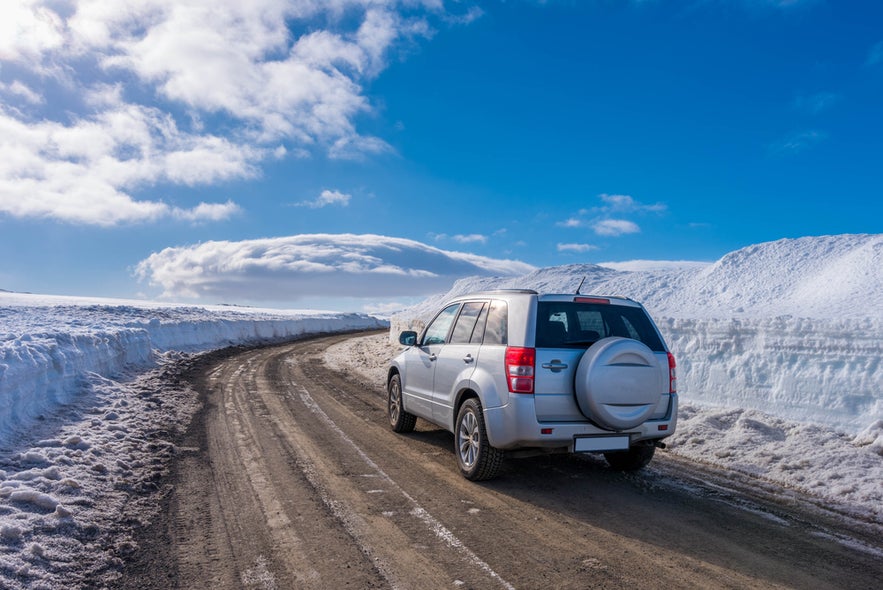 While a small car works well for summer travel on paved roads, a 4WD gives you the flexibility and safety needed for more challenging routes and conditions.
While a small car works well for summer travel on paved roads, a 4WD gives you the flexibility and safety needed for more challenging routes and conditions.
-
Required for Highland roads (F-roads)
-
Highly recommended for winter driving due to icy conditions
-
Better for rough terrain and carrying more luggage
Flexibility in Booking an Iceland Car Rental
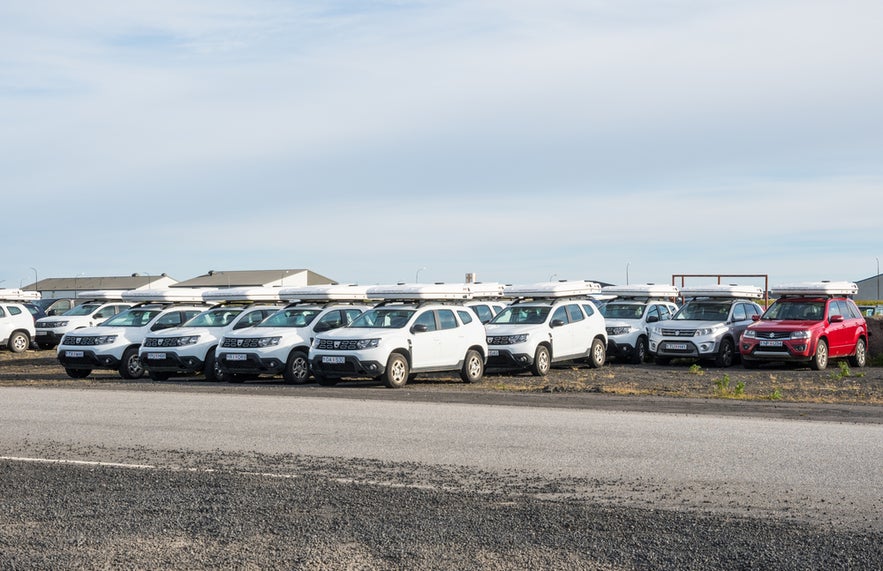 Most rental car companies in Iceland are flexible with pickup and return dates, as well as pickup and return locations. If you are working with an excellent rental company, flexibility is seldom an issue.
Most rental car companies in Iceland are flexible with pickup and return dates, as well as pickup and return locations. If you are working with an excellent rental company, flexibility is seldom an issue.
Usually, you can pick up your car at Keflavik International Airport, which is only about a 31-mile (50-kilometer) drive from Reykjavik, and drop it off there for a small extra fee.
If you are unsure of the length of time you wish to rent your car in Iceland, ask the car company about their flexibility when deciding which company to use.
If you want a specific car, especially in the summer season, consider booking in advance. However, it's worth noting that you'll very likely be able to rent a car in Iceland with just a day's or a few days' notice.
Availability may be limited, and you might only have options for more expensive cars that may not suit your exact needs. We always recommend booking with ample notice to secure the best options
When booking, keep in mind there is only one toll road in Iceland, the Vadlaheidi Tunnel by the town of Akureyri, which has a fee of around 1,990 ISK for passenger cars. You can pay for the Akureyri tunnel online 24 hours before or after your drive through it.
Driving Regulations and Road Conditions
Driving in Iceland comes with unique challenges, from unpredictable weather to strict road regulations that protect both drivers and the environment.
-
Always check road conditions before heading out. Visit the Icelandic Road and Coastal Administration (IRCA) website or call 1777 for English assistance.
-
Off-road driving is illegal and carries heavy fines due to environmental damage.
-
Highland tracks (F-roads) are legal to drive, but you must stick to marked routes.
Before setting out, learn about the current road conditions and legal restrictions.
Navigating Iceland’s Roads and Intersections
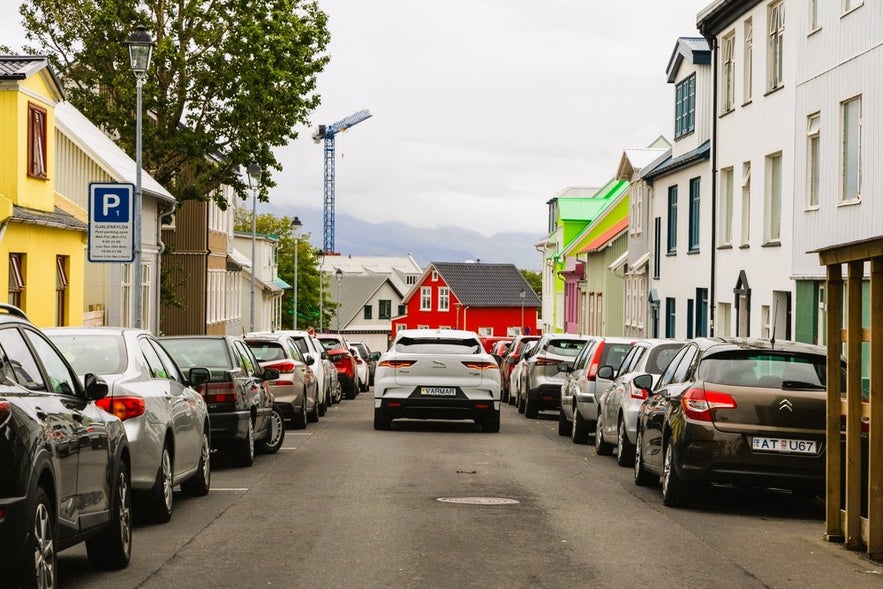 Iceland's roads generally have only one or two lanes. However, there are several one-way streets in the center and western parts of Reykjavik. This means navigating a car when driving in Reykjavik for the first time can often be frustrating.
Iceland's roads generally have only one or two lanes. However, there are several one-way streets in the center and western parts of Reykjavik. This means navigating a car when driving in Reykjavik for the first time can often be frustrating.
If you're staying in an accommodation like Hotel Reykjavik Centrum, be sure to familiarize yourself with the city's one-way streets and roundabouts to navigate the roads with ease.
In the countryside, you may encounter some single-lane bridges or single-lane tunnels. The etiquette for single-lane bridges is to always allow the vehicle closest to the crossing to go first. If there's any hesitation, you can flash your headlights at the oncoming cars to signal that they have the priority for crossing.
Before you enter single-lane tunnels, there will be a sign showing the right-of-way. Drive slowly so that you can stop the car on slippery roads if necessary.
 There are a few roundabouts in Iceland, mostly when entering Reykjavik or near larger towns. Make sure you note that the inside lane always has the right of way. You only need to indicate when leaving the roundabout, not when entering it.
There are a few roundabouts in Iceland, mostly when entering Reykjavik or near larger towns. Make sure you note that the inside lane always has the right of way. You only need to indicate when leaving the roundabout, not when entering it.
Use the inside lane if you plan to exit the roundabout at the second, third, or fourth exit. Use the outside lane if you plan to depart the roundabout on the first exit.
If you're on the outer lane and plan to exit on the second, third, or fourth exit, you must yield to the inner lane. This means you need to stop at the roundabout and let the cars in the inner lane leave first.
If you enter the roundabout on the outside lane but don't exit immediately, then use the indicator toward the inside lane (but don't switch lanes) of the roundabout until it's time to leave.
Make sure you change the indicator to the direction of your exit and check if you need to let another car from the inner lane. You can never switch lanes after you have entered a roundabout, and there are never more than two lanes in roundabouts in Iceland.
Also note that it is mandatory to use your headlights at all times, day or night, while driving in Iceland. This increases your visibility to other drivers and helps ensure safer driving conditions.
Speed Limits in Iceland
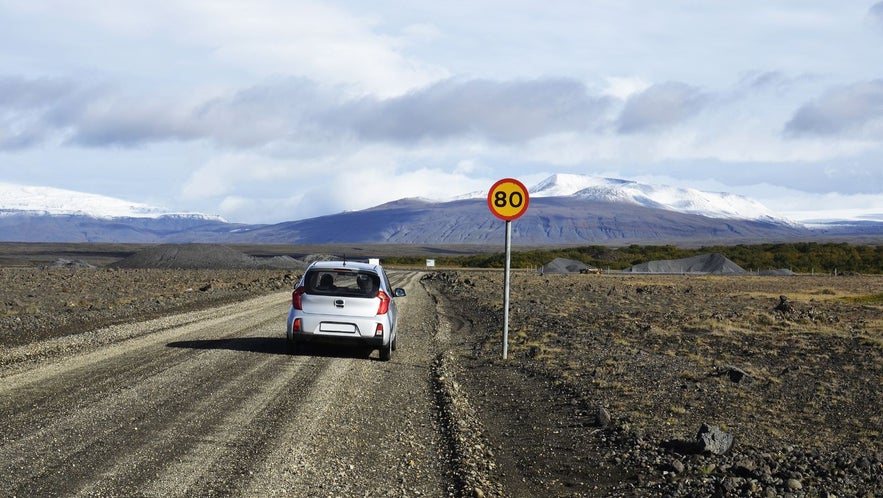 Standard speed limits in Iceland are as follows:
Standard speed limits in Iceland are as follows:
-
18 mph (30 kph) to 25 mph (40 kph) within Reykjavik
-
49 mph (80 kph) on dirt and gravel roads
-
55 mph (90 kph) on paved country roads, including the Ring Road
While you may not often see police cars on the roads, active speed cameras are hidden in many locations. Some of them correspond with a sign around 328 feet (100 meters) away informing you of their presence, and others are positioned to catch you by surprise.
If you are caught driving over the speed limit, you'll likely receive a hefty fine, and the police may even pull you over to the side of the road.
Rental Car Insurance in Iceland
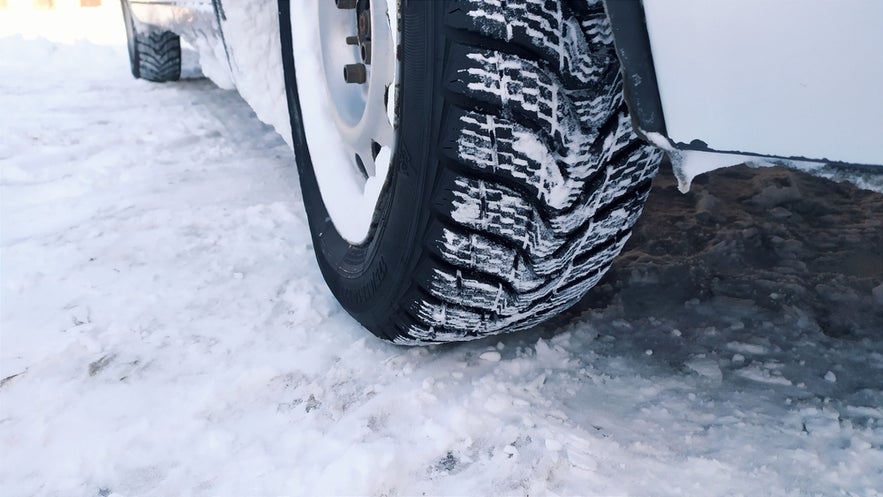 Most car rentals in Iceland include Collision Damage Waiver (CDW) coverage, but it's recommended to opt for extra insurance to ensure you're fully covered. Gravel protection is especially important for driving on Iceland's rough, gravel roads, as damage to tires and the undercarriage is usually not included.
Most car rentals in Iceland include Collision Damage Waiver (CDW) coverage, but it's recommended to opt for extra insurance to ensure you're fully covered. Gravel protection is especially important for driving on Iceland's rough, gravel roads, as damage to tires and the undercarriage is usually not included.
Winter tires are provided as standard, but you can also request studded tires if you're expecting icy conditions. It's also important to note that towing costs and damage to F-roads are typically not covered by your rental agreement. Be sure to check whether your credit card offers CDW coverage before booking to help save on additional insurance costs.
Parking in Iceland
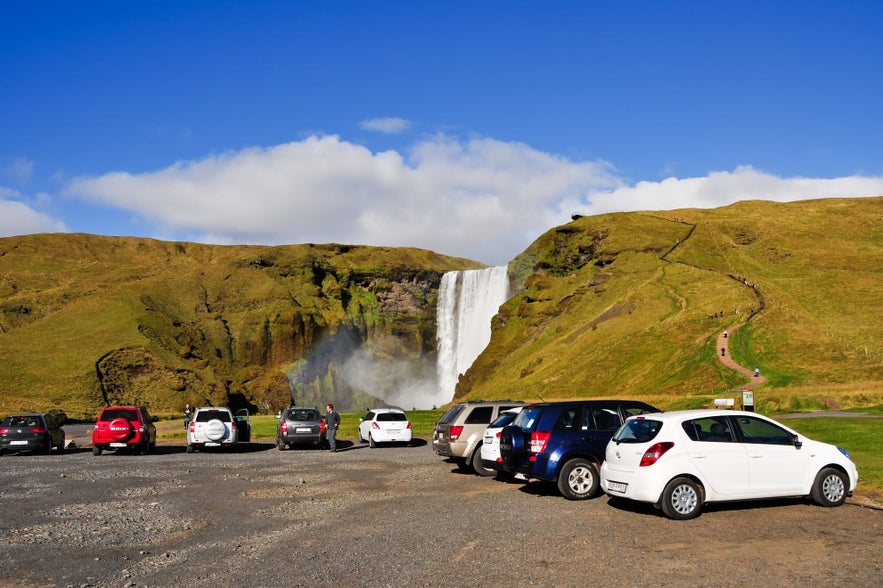 Parking in Iceland is generally free outside major settlements and tourist attractions. However, in central Reykjavik, Akureyri, and popular sites like Seljalandsfoss Waterfall and Thingvellir National Park, there may be a charge.
Parking in Iceland is generally free outside major settlements and tourist attractions. However, in central Reykjavik, Akureyri, and popular sites like Seljalandsfoss Waterfall and Thingvellir National Park, there may be a charge.
However, stopping or parking your car temporarily on the side of a road in the countryside is highly discouraged as it can be dangerous, particularly in icy or wet conditions. If you need to stop, make sure you find somewhere off the main roads, and ensure your car is visible from all angles and is not interrupting any traffic.
If it's dark or foggy outside or visibility is poor for some other reason, turn your hazard lights on so other drivers can see you easily. Also, do not walk too far from your car if visibility is poor for your own and others' safety.
-
See also Top 14 Things To Do in Reykjavik
Parking in Reykjavik: Zones and Prices
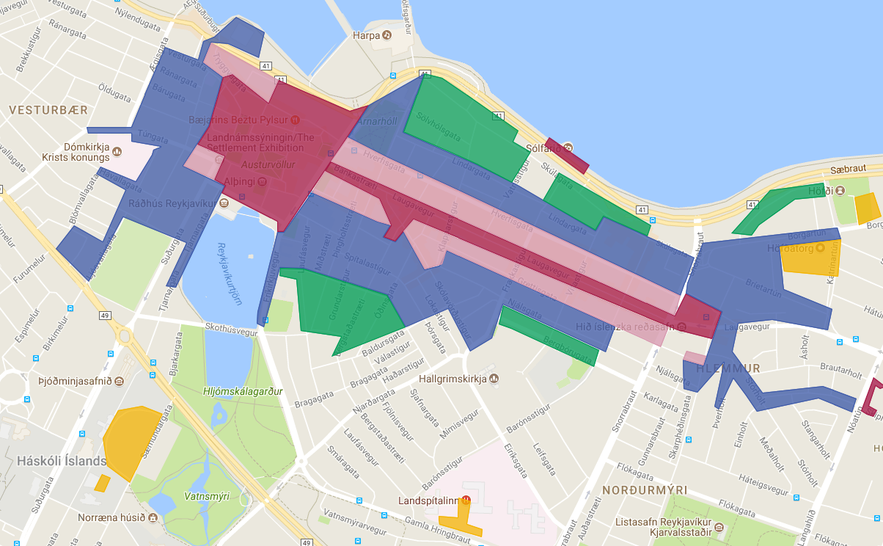 There are only four parking zones in Reykjavik, mainly located around the downtown area. The basic rule of paid parking in Reykjavik is that the closer you are to the main shopping street, Laugavegur, the higher the price.
There are only four parking zones in Reykjavik, mainly located around the downtown area. The basic rule of paid parking in Reykjavik is that the closer you are to the main shopping street, Laugavegur, the higher the price.
To determine which zone you are in, look at the P-signs on lampposts around the city. The meters and ticket machines also display the zone. You can conveniently pay for parking via the Parka app.
-
P1 (Red and Pink): The most central and expensive area to park in. The rates here are approximately 600 ISK per hour and are applicable between 9 AM and 9 PM on weekdays and Saturdays and between 10 AM and 9 PM on Sundays.
-
P4 (Orange): Rates in the orange zone are 220 ISK per hour, but they only apply on weekdays between 8 AM and 4 PM.
-
P3 (Green): The rates in the green zone are 220 ISK per hour for the first two hours and 65 ISK per hour after that. This applies to both weekdays and Saturdays.
-
P2 (Blue): The rates of the blue zone are significantly lower at 220 ISK per hour and are applicable from 9 PM to 9 PM on weekdays and Saturdays and between 10 AM and 9 PM on Sundays.
Additionally, six parking garages in central Reykjavik permit temporary parking. They're open daily from 7 AM to midnight. Harpa Concert and Conference Hall also offers convenient parking, making it a great spot for exploring the city.
Do I Need a Car in Iceland?
 Whether you need a car in Iceland depends on your travel plans. Self-driving tours, especially around the Ring Road or in remote areas, are a popular choice for those seeking freedom and flexibility. If you want to fully immerse yourself in nature and explore at your own pace, renting a car is highly recommended.
Whether you need a car in Iceland depends on your travel plans. Self-driving tours, especially around the Ring Road or in remote areas, are a popular choice for those seeking freedom and flexibility. If you want to fully immerse yourself in nature and explore at your own pace, renting a car is highly recommended.
However, there are several alternative ways of enjoying the country:
-
Public transport: The local bus transport system, Straeto, operates year-round to selected towns, with interruptions typically only occurring during severe weather or major holidays. Note that outside of the capital area and Akureyri, public transportation is not available once you reach your destination.
-
Reykjavik City Card: If you are looking for a budget-friendly way to explore the capital region, consider a convenient City Card that grants access to all local buses in and around Reykjavik. They're available for 24, 48, or 72 hours.
-
Taxis: Taxis are expensive, and drivers rarely take trips far outside city limits. Unfortunately, there are no services like Uber in Iceland, either.
-
Guided tours: If you prefer not to drive, consider the best excursion tours for everything from sightseeing tours to adventure activities like scuba diving and glacier hiking. Vacation packages are also an option for a fully planned experience.
-
Hitchhiking: Hitchhiking in Iceland is relatively safe, although it isn't very dependable and impractical for a group of people or those with a lot of luggage. Hitchhiking is also ill-advised outside of summer due to the ever-changing weather conditions.
Bottom line: If you want to explore beyond Reykjavik, renting a car is the best option. However, public transport or guided tours may be sufficient if you're staying in the capital or only visiting a few well-connected areas.
-
See also: Travel Etiquette in Iceland
Which Season Is Best for Your Icelandic Road Trip?
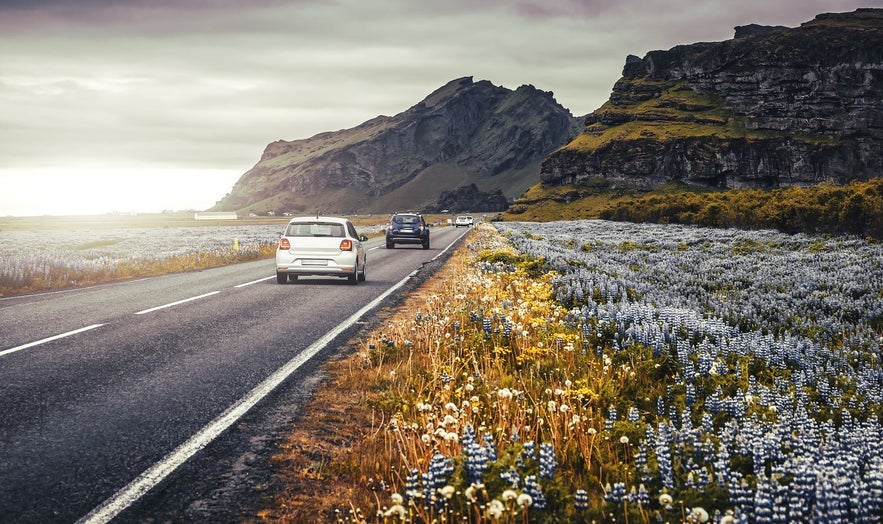 Summer is an ideal time for a self-drive adventure in Iceland, with longer days and mild weather perfect for exploring the country’s landscapes. If you're looking to experience Iceland at its best, the 10-day ultimate Iceland Ring Road tour gives you the flexibility to visit landmarks like waterfalls, glaciers, and volcanoes at your own pace.
Summer is an ideal time for a self-drive adventure in Iceland, with longer days and mild weather perfect for exploring the country’s landscapes. If you're looking to experience Iceland at its best, the 10-day ultimate Iceland Ring Road tour gives you the flexibility to visit landmarks like waterfalls, glaciers, and volcanoes at your own pace.
For a completely different experience, winter offers the chance to witness Iceland’s snow-covered beauty. The 7-day northern lights self-drive tour along the South Coast takes you through ice caves, glaciers, and winter scenery, providing a peaceful atmosphere to explore Iceland’s wonders when the crowds are smaller.
Don’t forget to find the perfect rental car for your needs (including 4WD options for F-roads and winter travel), and book accommodations.
What To Know About Road Trips in Iceland
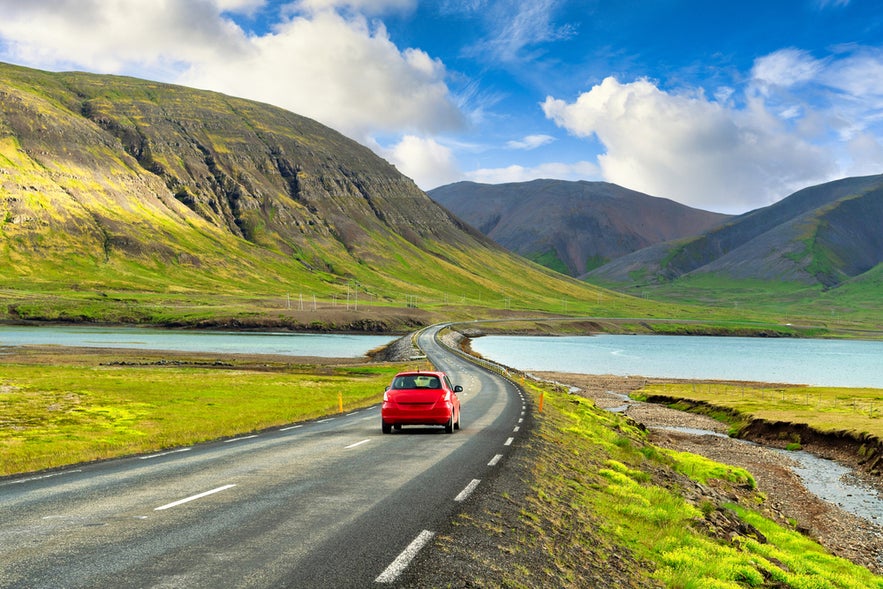 Planning a smooth and enjoyable road trip in Iceland involves considering several practical details. From understanding the unique driving conditions to preparing for the ever-changing weather, it’s essential to plan ahead.
Planning a smooth and enjoyable road trip in Iceland involves considering several practical details. From understanding the unique driving conditions to preparing for the ever-changing weather, it’s essential to plan ahead.
You’ll need to consider the best time of year to travel, what type of vehicle suits your route, and how to safely navigate Iceland’s road system. Additionally, being aware of local driving regulations and essential supplies can make all the difference in your experience.
Here are some key points to keep in mind as you prepare for your self-drive adventure!
Keep Your Iceland Itinerary Flexible
While it's tempting to pack as many things as you can into your itinerary, leave room for spontaneity and unexpected weather changes. Iceland hides many natural wonders, and part of the magic of a road trip is discovering them along the way.
You'll want to decide on the major stops, plan any self-drive activities, and book your accommodation beforehand, but allow yourself time between activities.
For example, don't try to complete the whole Ring Road in four days, as you'll spend most of the time driving and enjoy your trip less. Instead, take more time to explore one region, enjoy a longer visit, or plan a return trip!
-
Learn all about How Many Days To Spend in Iceland
Keep Your Tank Full or Stay Charged
One major thing to be mindful of during your travels is fueling your rental car. While you won't have to think much about finding gas stations in Reykjavik, they can be harder to find outside the Capital Region, especially in regions like the Westfjords, Eastfjords, and Northeast Iceland.
The most common stops in the countryside are N1 gas stations, offering self-service pumps 24/7. Some full-service locations provide essentials like groceries, car chargers, and easy meals, such as sandwiches and hot dogs.
If you're traveling around Iceland with an electric vehicle, you'll have to plan your route according to charging station locations. While electric charging infrastructure is growing in Iceland, it is less dense than gas stations, so strategic planning is necessary to avoid running low on power.
Most major towns along the Ring Road have charging stations, which you can find at many N1 gas stations. However, always check the availability and type of charger needed for your vehicle while planning your travel itinerary.
Whether you're driving a gasoline-powered or electric vehicle, it’s best to refuel or recharge whenever you have the opportunity, especially before venturing into more remote regions of the island.
-
Read more about Gas Stations in Iceland: The Ultimate Guide
-
See also Shopping for Groceries in Iceland
Emergency Services and Roadside Assistance in Iceland
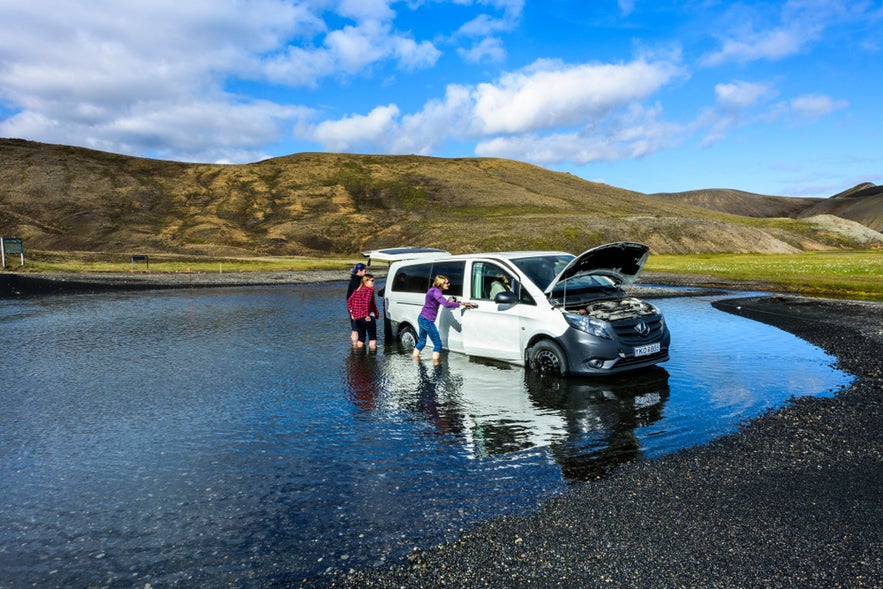 When driving in Iceland, knowing how to access emergency services and roadside assistance is crucial due to the country's varied terrain and remote areas.
When driving in Iceland, knowing how to access emergency services and roadside assistance is crucial due to the country's varied terrain and remote areas.
-
For emergencies, dial 112, Iceland’s official emergency number, available 24/7 for medical help, fire services, police, or rescue assistance.
-
If you experience car trouble, contact your rental company first. They may provide basic roadside assistance, but this varies between companies.
-
If heading into the Highlands or remote areas, submit your travel plan to SafeTravel for faster emergency response.
-
Before your trip, check what roadside coverage your rental includes, and consider extra coverage if you’re driving in more remote areas.
-
Check out the Best Guide to Rental Car Sizes in Iceland
Stay Connected With Good Internet and Mobile Data
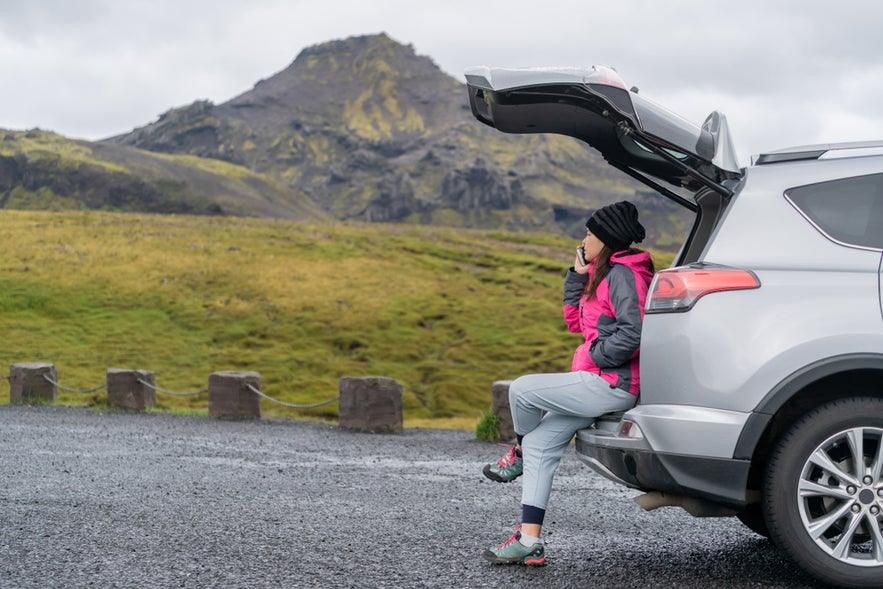 Staying connected during a road trip in Iceland is crucial for easy navigation, finding local information, and handling emergency situations.
Staying connected during a road trip in Iceland is crucial for easy navigation, finding local information, and handling emergency situations.
The best way to do so is by getting a local SIM card or eSIM for your phone. This will ensure reliable access to mobile data and communication services throughout your journey. This is especially important when exploring more remote areas of the country.
You can buy SIM cards online, at Keflavik Airport, in convenience stores, select gas stations, and in larger towns. You can also choose different data plans based on your needs, making it easy to stay online without worrying about excessive roaming charges.
Setting up a SIM card in Iceland is straightforward. Once activated, you will immediately have an Icelandic phone number and internet access. This allows for easier communication with local services, booking confirmations, and updates on weather or road conditions.
- Check out: Guide to SIM Cards in Iceland
- See also: Top 10 Apps for Traveling in Iceland
Hazards When Driving in Iceland
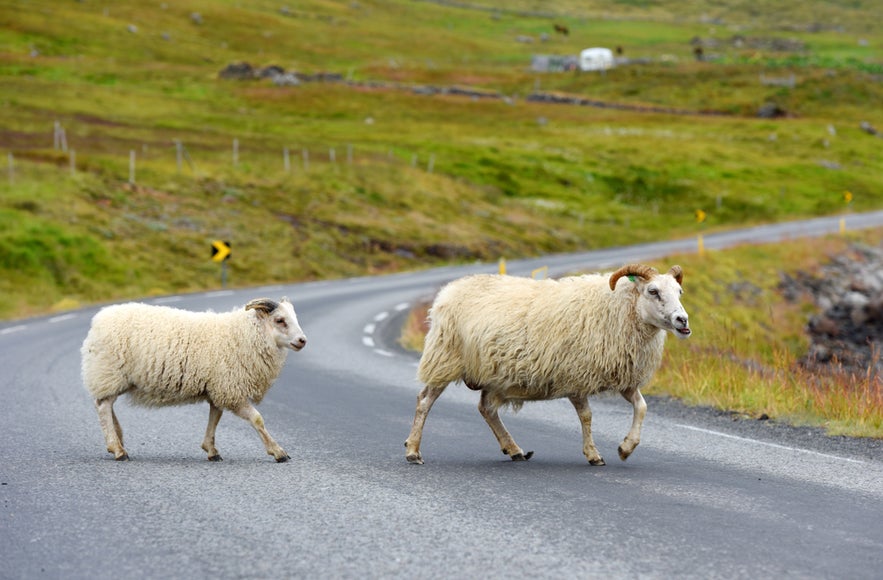 Driving in Iceland presents unique challenges, from unpredictable weather to rough terrain. Staying aware of these hazards can help ensure a safe journey.
Driving in Iceland presents unique challenges, from unpredictable weather to rough terrain. Staying aware of these hazards can help ensure a safe journey.
-
Underinflated or damaged tires: Road surfaces in Iceland vary widely. In rural areas, many are gravel or else littered with potholes. Therefore, you'll want to have tires in good condition every time you go out. Flat tires are not covered by insurance.
-
Icy roads: Iceland's winters bring freezing temperatures across the country, meaning drivers must be extra vigilant when behind the wheel. Even in summer, many mountain passes can be veiled in ice. If you know that you may be driving in such conditions, ensure you book a four-wheel drive vehicle.
-
Sheep crossing the road: The hundreds of thousands of sheep that call Iceland home roam free in summer, and they're known for running out into the roads when panicked. So, be careful and slow down when driving past a group of sheep near the road. If you do happen to hit a sheep, make sure to call 112 to report it.
-
High winds: Iceland’s strong winds can cause damage, even to parked cars. During stormy weather, open your car doors slowly and hold them firmly to prevent the wind from tearing them off.
-
Losing traction on gravel roads: Many of Iceland's remote areas can only be reached by driving on gravel roads. When the road changes from pavement to gravel, slow down gradually without braking and maintain a lower speed on the gravel surface.
-
Snowstorms: Snowstorms in Iceland can drastically reduce visibility to just a few feet. If a storm is forecast, it’s best to avoid driving that day. While snowplows work to clear the roads and bright yellow markers help guide drivers, it’s still easy to get stuck or risk an accident. Always check the weather conditions before setting out, especially during winter.
-
Speeding: With the ice, gravel, and unpredictable weather mentioned above, it should be no surprise that you should travel within speed limits and lower your speed accordingly should conditions become adverse.
Checking weather and road updates before heading out can help ensure a safer and more enjoyable drive.
Safety Tips for Driving in Iceland
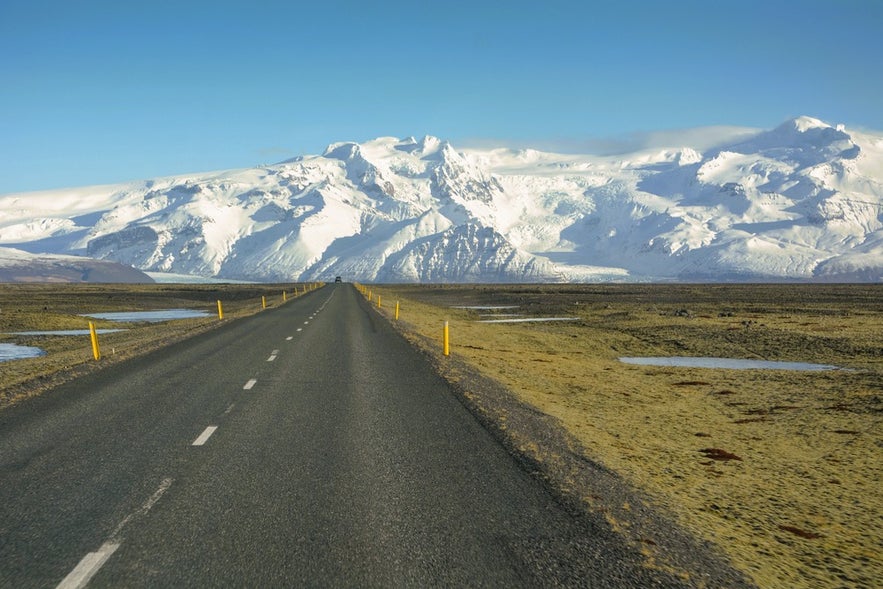 Driving in Iceland comes with unique challenges, so taking extra precautions can help ensure a smooth and safe journey.
Driving in Iceland comes with unique challenges, so taking extra precautions can help ensure a smooth and safe journey.
-
Keep an eye on changing weather conditions. Sudden weather shifts can impact visibility and road conditions, especially in remote areas.
-
Use road signs and markers for guidance. In bad weather, like snow or fog, bright yellow markers help drivers stay on the road.
-
Watch for blind hills and sharp turns. Many roads have limited visibility, so try to reduce speed when approaching bends or hill crests.
-
Prepare for river crossings in the Highlands. When driving in the Highlands, keep in mind that rental cars are often not covered for potential damage caused by river crossings, so be sure to check your insurance beforehand. If unsure, consider taking a guided Highlands tour instead.
-
Know how to handle emergency stops. If you must stop due to weather or road conditions, pull completely off the road in a safe, visible location.
-
Follow seat belt and car seat laws. Everyone in Iceland must wear seat belts in all cars and buses. Children must sit in the appropriate car seats suitable for their age, ensuring safety for all passengers.
Taking these extra precautions makes driving in Iceland safer and more enjoyable, whether you’re exploring the Ring Road or venturing into remote regions.
Important: Using a handheld mobile phone while driving is illegal in Iceland. If you need to make a call, use a hands-free system or pull over to a safe location.
-
Read more about How To Drive Safely in Iceland
Frequently Asked Questions About Driving in Iceland
To reduce your concerns about driving in Iceland, we've answered the most commonly asked questions and covered a few basic Iceland driving rules.
If any questions you might have about driving around Iceland have been missed here, please make sure to include them in the comments below. We will be sure to answer your questions as soon as possible!
Is It Difficult To Drive in Iceland?
Driving in Iceland can be challenging, especially in winter when roads are icy and weather conditions change rapidly. Gravel roads, blind hills, and strong winds require extra caution. However, main roads like the Ring Road are well-maintained and easy to navigate, making driving manageable for prepared travelers.
Can a U.S. Citizen Drive in Iceland?
Yes, U.S. citizens can drive in Iceland with a valid U.S. driver’s license. An International Driving Permit (IDP) is not required unless your license is not in the Latin alphabet.
How Old Do You Need To Be To Rent a Car in Iceland?
To rent a passenger car in Iceland, you must be at least 20 years old, which is required for both insurance and safety purposes.
The minimum age is 23 for four-wheel drives or minibuses, as these vehicles demand more driving experience and advanced handling skills.
A valid driver’s license, written in Latin letters and held for at least one year, must be presented at the time of rental to verify your eligibility.
Is It Safe To Drive in Iceland as a Tourist?
Yes, but it requires preparation. Iceland has well-maintained roads, but conditions can be unpredictable. Always check the weather and road conditions before driving, follow speed limits, and be cautious of gravel roads, one-lane bridges, and free-roaming sheep.
Should I Rent a Car in Iceland?
Renting a car is the best way to explore Iceland if you want flexibility and access to remote areas. A rental is ideal for road trips along the Ring Road or the Golden Circle. However, if you plan to stay only in Reykjavik or take guided tours, a car may not be necessary.
Do You Use Manual or Automatic Cars in Iceland?
While manual cars are very common in Iceland, there are still plenty of automatic cars available. You can clearly see if a car has a manual or automatic transmission when comparing your options on Guide to Iceland, making it easy to find the right choice for your road trip and skill level.
Do I Need an International Driving Permit (IDP) in Iceland?
You do not need an IDP if your license is from the EU, EEA, UK, USA, Canada, or Australia. If your license isn’t in the Latin alphabet (Arabic, Japanese, Cyrillic, for example), you must carry an IDP.
How Much Does Gas Cost in Iceland?
The average price of gasoline in Iceland is approximately 315.27 ISK per liter, which is about 2.23 USD per liter or 8.44 USD per gallon. Diesel prices are slightly higher, averaging around 326 ISK per liter or 2.26 USD per gallon.
Your Icelandic Road Trip Awaits
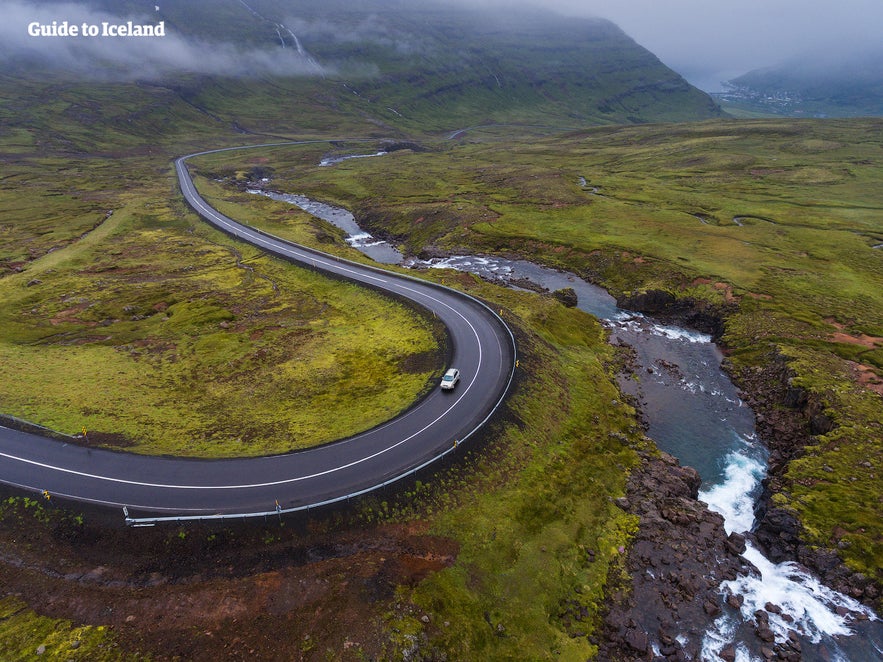 Driving in Iceland offers an unparalleled way to witness the country's dramatic landscapes, from the iconic Ring Road to the rugged Highlands.
Driving in Iceland offers an unparalleled way to witness the country's dramatic landscapes, from the iconic Ring Road to the rugged Highlands.
With the flexibility to explore at your own pace, a self-drive adventure allows you to truly immerse yourself in Iceland's natural beauty. By understanding the driving regulations, road conditions, and essential preparations outlined in this guide, you're well-equipped to embark on a safe and unforgettable journey.
Are you ready to hit the road and explore Iceland’s stunning landscapes? What’s the first stop on your dream Icelandic road trip? Share your plans and thoughts in the comments below—we’d love to hear from you!


